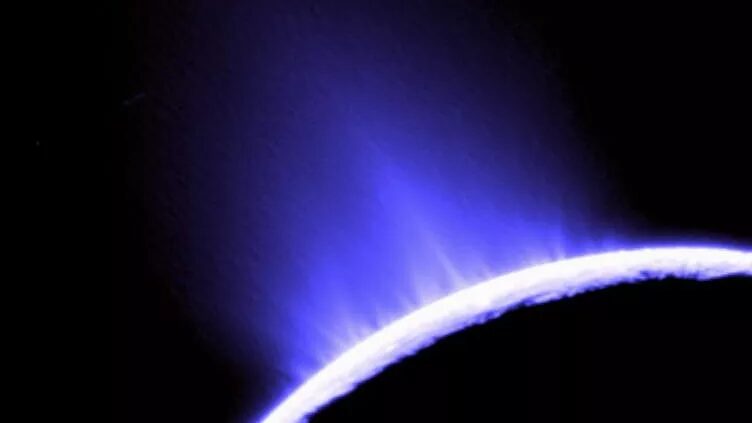
An international team discovered signs of sodium phosphates, a salt sometimes used in deli meat here on Earth, in a plume of ice shot out from a subsurface ocean on Enceladus, one of Saturn's moons.
This doesn't mean someone's curing meat around Saturn; phosphates are a basic key ingredient in the chemistry of geology and biology. Astronomers have long been interested in oceans on other worlds, since water is a fundamental requirement for life as we know it. If these alien oceans also contain salts and organic molecules like Earth's oceans do, they, too, might be capable of supporting life.
The difficulty with subsurface oceans is that they're locked below a thick, icy crust, where NASA's robotic explorers can't yet reach. But Enceladus conveniently erupts every once and a while, spewing material from its hidden ocean in a vast plume of water ice. These plumes were originally discovered by NASA's Cassini spacecraft, which orbited Saturn for 13 years and even flew through some of Enceladus' plumes, gathering information along the way.
When Cassini discovered the plumes during its orbit of Saturn, scientists detected evidence of sodium salts (like sodium chloride, aka table salt, and sodium bicarbonate, better known as baking soda), hinting at the chemistry in the oceans below. But Cassini wasn't designed to investigate icy plumes and mysterious oceans. This new research uses information from the Cassini Cosmic Dust Analyzer, originally intended to figure out the composition of dust from Saturn's rings, to find a fresh perspective on the plumes.
The detection of phosphates on Enceladus helps scientists put together the picture of what's going on below the moon's icy exterior. Phosphates tend to appear in water that's very low in calcium — for example, in "soda lakes'" such as Mono Lake in California. Soda lakes are particularly alkaline — the opposite of acidic — and they're rich in salts and other phosphates. The researchers think this kind of water is precisely what's inside Enceladus — which may have phosphorus concentrations at least 100 times greater than what's in Earth's oceans — the team reported in their study, published June 14 in the journal Nature.
With this discovery, scientists now have plenty of evidence to confidently say that the plumes come from Enceladus' subsurface ocean and that the Saturnian moon is loaded with biologically critical phosphorus — and they have a tantalizing prospect for where life may be hiding out in our solar system.



It still won't ever self-assemble into RNA/DNA.
Just like this sentence didn't write itself.
What therefore are we missing?